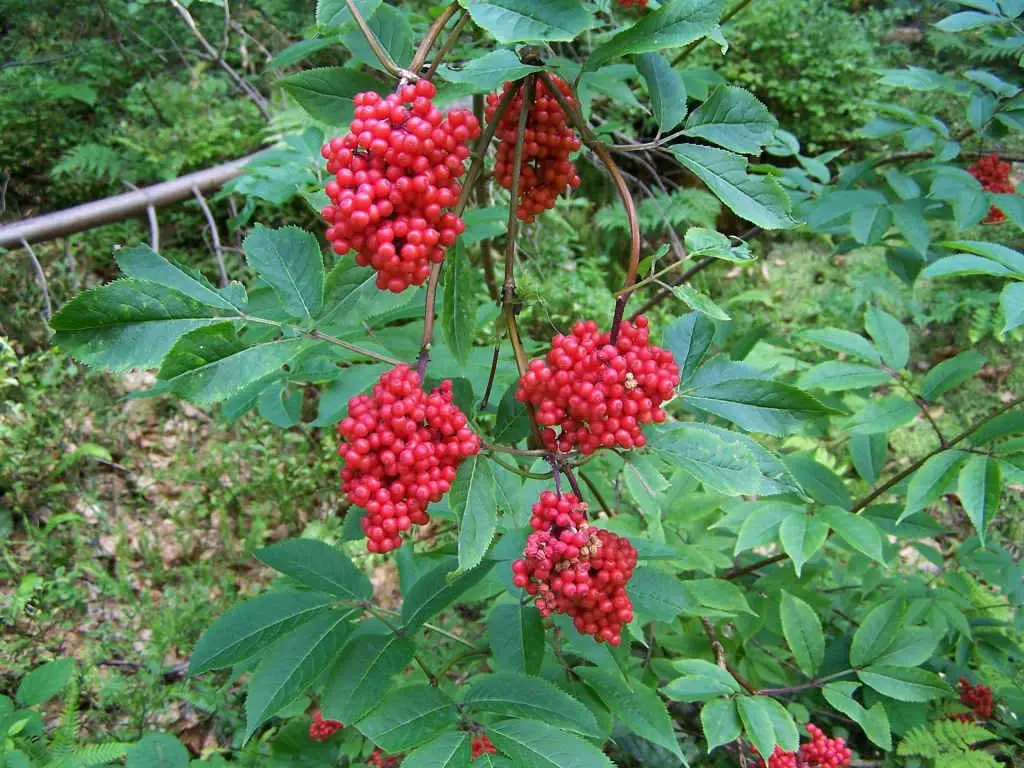
The shrub or tree whose scientific name is Sambucus racemosa It is a plant with a high ornamental value that can be grown in all kinds of gardens, and even in pots. Both its yellowish flowers and its red fruits, not to mention its curious leaves, make it a very, very attractive species.
In addition, its maintenance is not very complicated. So that… Do you want to meet him? : )
Origin and characteristics

Our protagonist is a deciduous shrub native to Europe, northern and central North America and the temperate regions of Asia whose scientific name is Sambucus racemosaalthough popularly it is known as red elderberry. Reaches a height of 2 to 6 meterswith leaves composed of 5-7 lanceolate and irregularly serrated follicles measuring 16cm long. Of these it must be said that when they are crushed they give off a very unpleasant smell.
The flowers are grouped in panicles with a more or less conical shapeand they are pink when still closed, and then white, yellowish or cream-colored when opened. They are very fragrant and attract butterflies and hummingbirds. The fruit is a bright red or purple drupe which contains 3-5 seeds.
What are their cares?

If you want to have a copy, we recommend that you provide it with the following care:
- Location: outside, in full sun.
- Earth:
- Pot: you can use universal growing medium.
- Garden: it is indifferent, it grows well in all types of soils.
- Irrigation: it has to be watered about 3-4 times a week in summer and a little less the rest of the year. Avoid waterlogging.
- Subscriber: from the beginning of spring to the end of summer (you can in autumn if you live in an area with a mild climate), with ecological fertilizers once a month.
- Multiplication: by seeds in autumn (they need to be cold before germinating) and by cuttings in late winter.
- Rusticity: withstands cold and frosts down to -12ºC.
What did you think of Sambucus nigra?

